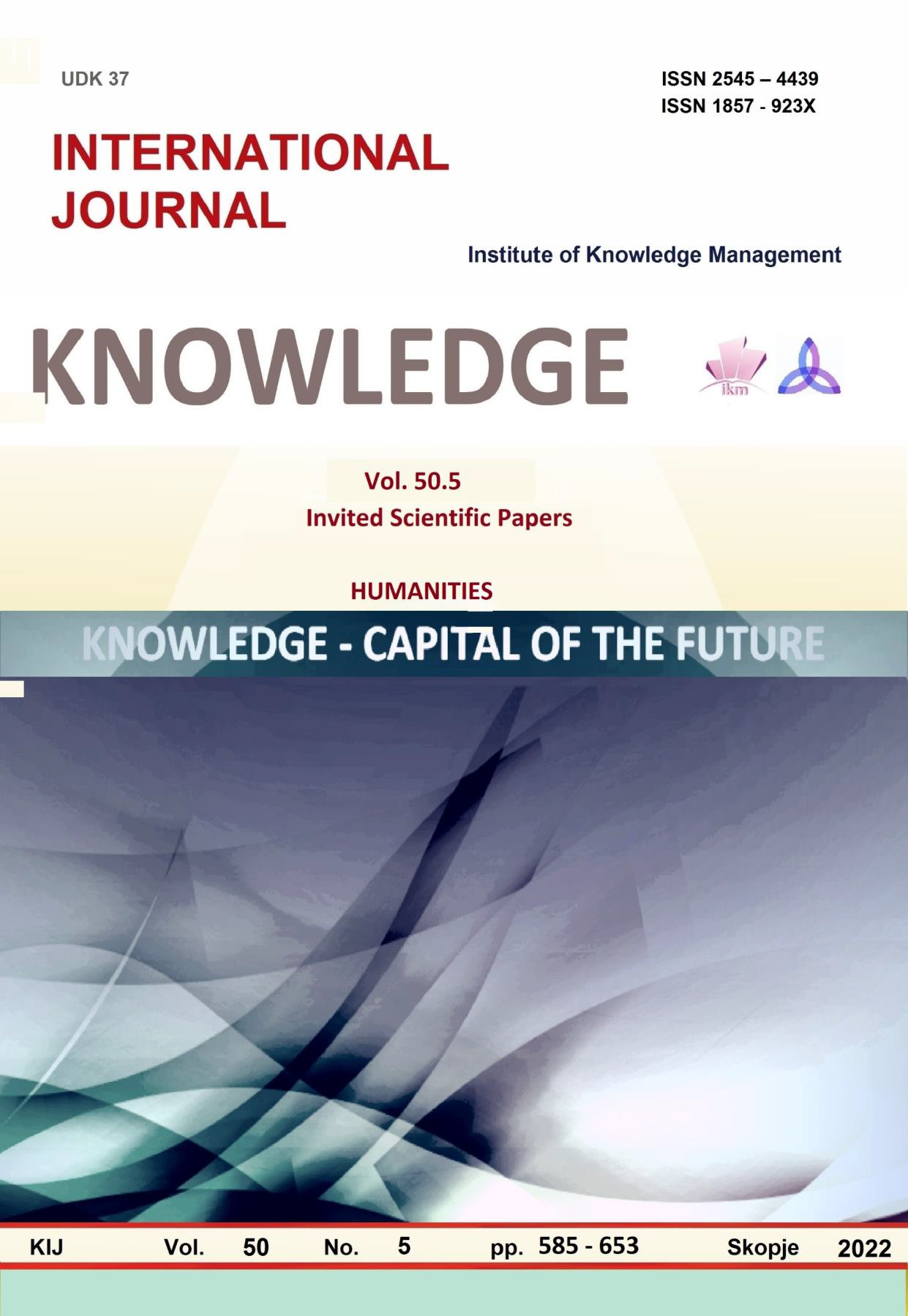THE ADOPTION OF A FOREIGN LANGUAGE
Abstract
The purpose of the present study is to bring the evidence of a foreign language adoption. In the famous article on the interlinguistic language, Selinker (Selinker, 1984 [1972]: 35) puts the influence of the previously learned language (mother tongue / L1) as one of the main factors in the development of the interlinguistic language. Any experienced teacher after having taught a foreign language is aware of some problems in mastering the language which are repeated from generation to generation. This can clearly be brought into connection to the characteristics of L1 of the students and their background. However the question of the role of L1 in second / foreign language acquisition provokes a lot of discussion in this and related disciplines and of course understandings in the scope, nature and mechanisms of transfer (or transfer) of language elements from L1 to the new language being taught differ among scientists.
The role of L1 in the adoption of a L2 language is really important when speaking of learning foreign languages.
Although people have always been aware of the 'foreign accent' and the impact of languages on top of each other when they come in contact, intense scientific discussions about the role of L1 in the study and teaching of a foreign language begin in the first half of the 20th century. Finally, according to the mental theories of learning, the learner has a central place in the process of adoption. The active participation of the learner presupposes creating their own strategies, and in that context the use of knowledge remains central
References
Adinolfi, L., & Astruc, L. (2017).“An Exploratory Study of Translanguaging Practices in an Online Beginner-level Foreign Language Classroom. “Language Learning in Higher Education 7 (1): 185–204.
Bruen, J., & Kelly. N. (2014).“Using a Shared L1 to Reduce Cognitive Overload and Anxiety Levels in the L2Classroom.”The Language Learning Journal 45 (3): 1–14.
Dulay, H., & Burt, M. (1974b). You can’t learn without goofing. In J. Richards (Ed.), Error Analysis: Perspectives on Second Language Acquisition (pp. 95–123). London: Longman.
Dulay, H., & Burt, M. (1975). Creative construction in second language learning and teaching. In M. Burt and H. Dulay (Eds.), On TESOL ’75: New Directions in Second Language Learning, Teaching and Bilingual Education (pp. 21–32). Washington, DC: Teachers of English to Speakers of Other Languages.
Dulay, H., Burt, M., & Krashen, S. (1982). Language Two. New York: Oxford University Press.
Ellis, N. (1994). Implicit and explicit language learning—an overview. In N. Ellis (Ed.), Implicit and Explicit Learning of Languages (pp. 1–31). London: Academic Press. Ellis, N. (2001). Memory for language. In P. Robinson (Ed.), Cognition and Second Language Instruction. Cambridge, UK: Cambridge University Press.
Ellis, N. (2002). Frequency effects in language processing: a review with implications for theories of implicit and explicit language acquisition. Studies in Second Language Acquisition, 24, 143–188.
García, O., & T. Kleyn. (2016).“Translanguaging Theory in Education.”In Translanguaging with MultilingualStudents, edited by O. García and T. Kleyn, 23–47. New York: Routledge.
Gass, S., & Selinker, L. (Eds.) (1992). Language Transfer in Language Learning.Amsterdam: John Benjamins.
Gass, S., Sorace, A., & Selinker, S. (1999). Second Language Learning: Data Analysis. Mahwah, NJ: Lawrence Erlbaum Associates.
Ghobadi, M., &H. Ghasemi. (2015).“Promises and Obstacles of L1 Use in Language Classrooms: A State-of-the-Art Review. “English Language Teaching 8 (11): 245–254.
Hwa-Froelich, D. (2012) Supporting development in internationally adopted children. Baltimore, MD: Paul H. Brookes.
Johnston, W. R. (2017) Historical international adoption statistics, United States and world. Retrieved from http://www.johnstonsarchive.net/policy/adoptionstatsintl.html> (28 April 2019).
Kellerman, E. (1979). Transfer and non-transfer: where we are now. Studies in Second Language Acquisition, 2, 37–57.
Kellerman, E. (1985). Dative alternation and the analysis of data: a reply to Mazurkewich. Language Learning, 35, 91–101.
Kellerman, E. (1987). Aspects of transferability in second language acquisition. Unpublished doctoral dissertation, Katholieke Universiteit te Nijmegen.
Kellerman, E., & Sharwood Smith, M. (Eds.). (1986). Cross-Linguistic Influence in Second Language Acquisition. Elmsford, NY: Pergamon.
Kellerman, E., van Ijzendoorn. J. & Takashima, H. (1999). Retesting a universal: the Empty Category Principle and learners of (pseudo)Japanese as a second language. In K. Kanno (Ed.), Studies on the Acquisition of Japanese as a Second Language (pp. 71–87). Amsterdam: John Benjamins
Schachter, J. (1983). A new account of language transfer. In S. Gass and L. Selinker (Eds.), Language Transfer in Language Learning (pp. 98–111). Rowley, MA:Newbury House.
Schachter, J. (1988). Second language acquisition and its relationship to Universal Grammar. Applied Linguistics, 9, 219–235.
Scott, K. A., Pollock, K. E., Roberts, J. A., & Krakow, R. (2013). Phonological processing skills of children adopted internationally. American Journal of Speech-Language Pathology, 22(4), 673–683.
Scott, K. A., Roberts, J. A., & Glennen, S. (2011). How well do children who are internationally adopted acquire language? A meta-analysis. Journal of Speech-Language-Hearing Research, 54, 1153–1169.
Secord, W., Semel, E., & Wiig, E. H. (2003). Clinical evaluation of language fundamentals, (4th ed.). Toronto, Canada: The Psychological Corporation.
Selinker, L. (1969). Language transfer. General Linguistics 9:2.67-92.
Selinker, L. (1971). The psychologically-relevant data of second-language learning. In P.Pimsleur & T. A. Quinn (Eds.) The psychology of second- language learning. Cambridge: Cambridge University Press. Pp. 35-44.
